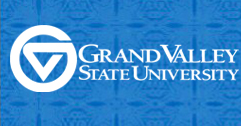“I did RNA-seq, Now What?”: Applications and Examples of Gene Set Enrichment Analysis (GSEA)
Description
Next-generation sequencing (NGS) has become a powerful tool in the realm of biology as it yields high through sequencing for a wide range of applications with its many different flavors; DNA-seq, RNA-seq, scRNA-seq, ATAC-seq, etc. One main feature of NGS is the sheer volume of data that is produced due to the mechanism of sequencing. To complement its efficiency, new computational methods have been developed for high throughput analysis. RNA-seq is a technique employed to sequence the transcriptome of a sample, allowing us to understand the genes being expressed at that moment. By sequencing both a treatment and control group of an experimental design, we can compare gene expression levels to understand treatment effects. Different tools such as edgeR, DESeq, and voom+limma are essential in calculating the differential expression (DE) of genes between the two groups and yield specific genes that have been up or down regulated. Despite the novelty in a list of genes, these can be on the order of hundreds and even thousands, making it nearly impossible to parse each gene for relevance in our observed study. With previously assembled or custom sets of genes, we can use Gene Set Enrichment Analysis (GSEA) post-DE calculation to study combinations of biologically grouped genes which are differentially expressed together, allowing us to investigate pathways and interactive gene networks. Results from GSEA lead us to conclusions that help explain higher-level biological questions and provide a larger insight into RNA-seq experiments.
“I did RNA-seq, Now What?”: Applications and Examples of Gene Set Enrichment Analysis (GSEA)
Next-generation sequencing (NGS) has become a powerful tool in the realm of biology as it yields high through sequencing for a wide range of applications with its many different flavors; DNA-seq, RNA-seq, scRNA-seq, ATAC-seq, etc. One main feature of NGS is the sheer volume of data that is produced due to the mechanism of sequencing. To complement its efficiency, new computational methods have been developed for high throughput analysis. RNA-seq is a technique employed to sequence the transcriptome of a sample, allowing us to understand the genes being expressed at that moment. By sequencing both a treatment and control group of an experimental design, we can compare gene expression levels to understand treatment effects. Different tools such as edgeR, DESeq, and voom+limma are essential in calculating the differential expression (DE) of genes between the two groups and yield specific genes that have been up or down regulated. Despite the novelty in a list of genes, these can be on the order of hundreds and even thousands, making it nearly impossible to parse each gene for relevance in our observed study. With previously assembled or custom sets of genes, we can use Gene Set Enrichment Analysis (GSEA) post-DE calculation to study combinations of biologically grouped genes which are differentially expressed together, allowing us to investigate pathways and interactive gene networks. Results from GSEA lead us to conclusions that help explain higher-level biological questions and provide a larger insight into RNA-seq experiments.
